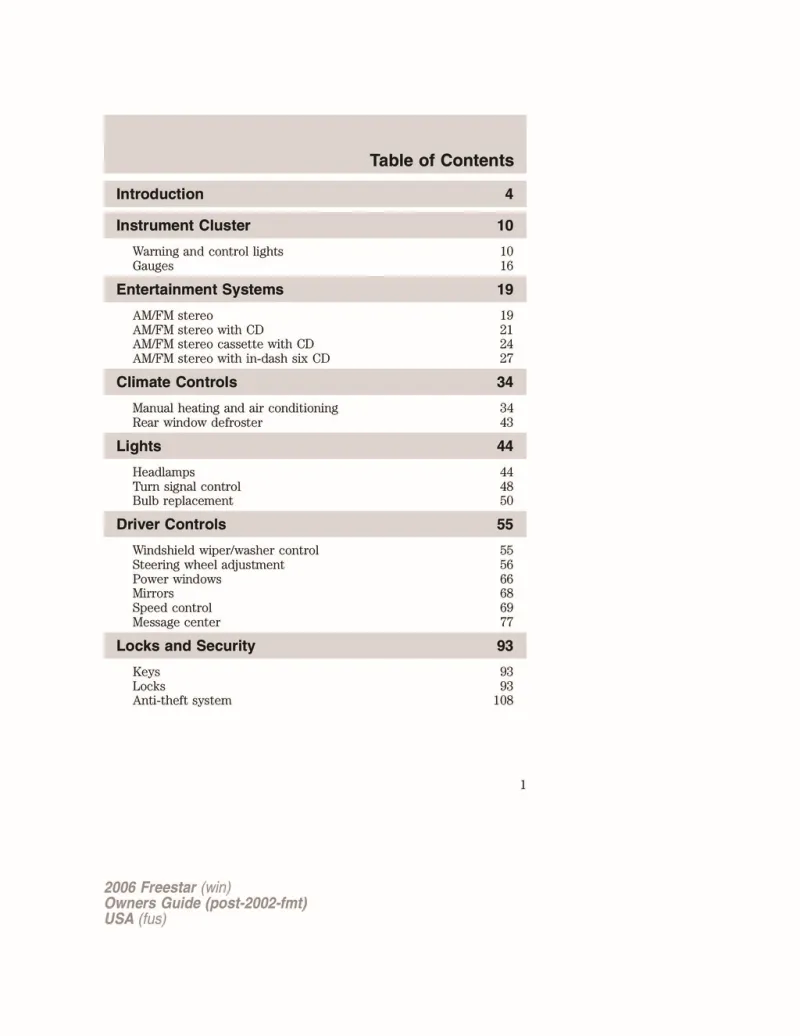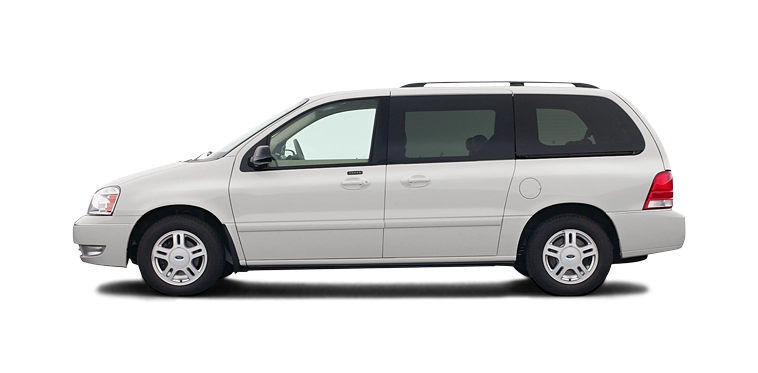2006 Ford Freestar Owner's Manual

Table of Contents
2006 Ford Freestar Overview
Introduction
The 2006 Ford Freestar is a versatile and family-friendly minivan that combines practicality with comfort. Designed to accommodate larger families or groups, this model offers ample space, innovative features, and reliable performance, making it an ideal choice for daily commutes, road trips, and everything in between. With its spacious interior and thoughtful design, the Freestar stands out in the competitive minivan market.
Powertrains
The 2006 Ford Freestar is equipped with a capable 3.9-liter V6 engine that produces 193 horsepower and 240 lb-ft of torque, paired with a smooth-shifting four-speed automatic transmission. For those seeking a bit more power, Ford also offers a 4.2-liter V6 option that enhances performance while maintaining fuel efficiency. The Freestar ensures a comfortable ride with its front-wheel-drive configuration, which provides good traction in varying weather conditions.
Trims
Features
Family-oriented features abound in the 2006 Ford Freestar, from flexible seating configurations to multiple storage compartments. The interior is designed for comfort, with available features like dual-zone climate control, rear air conditioning, and entertainment systems to keep passengers entertained. Safety is also a priority, with standard features such as anti-lock brakes and multiple airbags enhancing peace of mind on the road.
Owner's Manual
The owner's manual for the 2006 Ford Freestar serves as a valuable resource for owners, providing detailed instructions on maintenance, operation, and troubleshooting. It covers everything from routine care to understanding the vehicle's systems, ensuring that owners can make the most of their Freestar for years to come.
User manual download
The Ford Freestar owner manual for the 2006 model year is to be found in PDF downloadable format on this page. The owner manual for the model year 2006 is free and in English, but the repair manuals are usually not easy to get and may cost more.
Manual Questions
Fill the form below and someone will help you!

